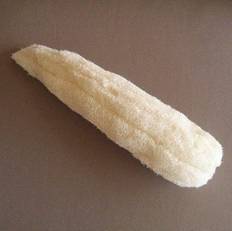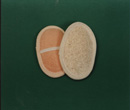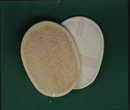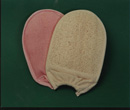Egyptian Queen of Loofah / Luffa

- Loofah from Egyptian is considered to be the best of the world
- A biodegradable alternative to sea sponges
- A vegetable plant from the same family as the cucumber
- It is the largest variety and grows to 20-25" long and 4-5" wide.
WHY LOOHAF
- This looser knit species is pliable, which makes it perfect for bath, shower and cleaning
- Soft and elastic fibres are round in cross section for exfoliation
- A mild way to remove dead and unhealthy skin tissues
- Gentle friction also increases localized blood flow, improving circulation
Tips For Usage
- It swallows and becomes really soft once it get in touch with water
- It also dries quickly after use preventing bacterial build-up
Tell You More
Egyptian Loofah (Luffe Aegyptiaca) is DIFFERENT from the loofah grown in Asia and South America (Luffe Acutangula)
Egyptian Loofah (Luffe Aegyptiaca) is DIFFERENT from the loofah grown in Asia and South America (Luffe Acutangula)
- Asian loofah is the most common and hardiest of the three loofah types. Very dense, keeps its shape even when wet.
- Mayan loofah is native to Mexico and Central America. It is a great balance between Asian and Egyptian loofah. Not too hard and not too loose. They are usually smaller.
- Egyptian Loofah Queen lasts longer, has more even distribution of fibers, has no sharp edges and is fluffier, softer and more resilient.
- Since it is whiter in color than Asian and South American loofah, it needs no bleaching, which erodes the fibers.
- The Egyptian climate and the genetic characteristics of the spiece yields a loofah that is almost free from the longitudinal ridges that cause a loofah to split after few uses.
- Unlike harshly abrasive scrubbers and artificial sponges, a loofah's firm but elastic fibers are round in cross section and are less likely to scratch skin.



